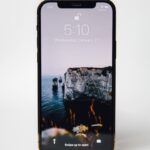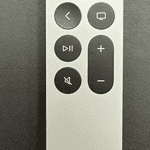The iPhone 7 and iPhone 7 Plus, introduced by Apple in September 2016, marked a significant shift in smartphone technology. They were released on September 16, 2016, and brought many new features, including the end of the headphone jack. Enthusiasts eagerly awaited their debut, even lining up to be among the first to experience the upgrades.
These models had noticeable design and hardware changes. The 12-megapixel camera offered optical image stabilization, larger apertures, and a wider color capture for vibrant photos. Water, splash, and dust resistance boosted everyday durability, making them reliable.
Technical specifications improved with faster processors and better battery life. The iPhone 7 and 7 Plus, with their advanced camera systems and resistance features, showed Apple’s commitment to innovation.
Key Takeaways
- iPhone 7 and 7 Plus released on September 16, 2016.
- Improved camera, water resistance, and removal of the headphone jack.
- Faster processors and better battery life for enhanced performance.
Design and Hardware Enhancements
The iPhone 7 and 7 Plus brought notable changes in design and hardware. These smartphones introduced new colors, advanced home button and display features, camera improvements, and audio updates.
Innovative Color Options
Apple introduced two new colors: Jet Black and Black. The Jet Black has a glossy finish achieved through a nine-step process. The Black color has a matte appearance, adding a subtle elegance. Other colors include Gold, Silver, and Rose Gold. Later, a Red version joined the lineup, supporting Product (RED) and adding a bold look to the selection.
New Home Button and Display Features
The updated home button features the Taptic Engine, providing tactile feedback. This new button is pressure-sensitive and more durable. The Retina HD display offers brighter and more vibrant colors. 3D Touch allows users to interact with the display by pressing lightly or firmly, unveiling different functions. With increased brightness and a wide color gamut, the display is sharp and clear.
Improvements in Camera Technology
The iPhone 7 features a 12-megapixel camera with optical image stabilization. This helps reduce blur in photos. The iPhone 7 Plus includes a dual-camera system, combining a wide-angle and a telephoto lens for improved zoom and depth effects. Both models capture more detail and color with a larger f/1.8 aperture and a six-element lens. These enhancements ensure better photos and videos, even in low light.
Audio and Earphone Changes
One of the significant changes is the removal of the headphone jack. Users now connect earphones through the Lightning Connector. Apple also launched the AirPods, wireless earbuds that connect via Bluetooth. The iPhone 7 includes stereo speakers, offering improved sound quality. EarPods with a lightning connector are also included, providing a seamless listening experience.
Technical Specifications and Performance
The iPhone 7 and iPhone 7 Plus brought several enhancements improving their processing power, connectivity, and software integration.
Processor, RAM, and Battery Enhancements
The iPhone 7 and iPhone 7 Plus both feature the Apple A10 Fusion chip. This processor is a quad-core design with two high-performance cores and two high-efficiency cores. This combination allows for better multitasking and app performance.
Both models come with 2GB of RAM. The iPhone 7 Plus has an advantage with 3GB of RAM, which helps with its dual-camera system.
Battery life saw improvement. The iPhone 7 offers up to 14 hours of talk time, while the iPhone 7 Plus offers up to 21 hours. These durations are good for daily use but not exceptionally long-lasting.
Connectivity and Network Improvements
The iPhone 7 and iPhone 7 Plus support LTE Advanced. This means faster download speeds and improved network reliability. Wi-Fi and Bluetooth were also upgraded, featuring improved signal strength and better connection stability.
The removal of the headphone jack marked a significant change. Users now rely on the Lightning port for audio or wireless Bluetooth headphones. This change aimed to enhance water resistance, which is improved, rated at IP67. This rating means the phone can withstand being submerged in water up to 1 meter for 30 minutes.
Software and Ecosystem Integration
Both models shipped with iOS 10. This brought features like an improved Siri, better notifications, and enhanced Maps and Photos apps.
Machine learning capabilities were also enhanced. These improvements allowed for smarter photo classification and better predictive text features. Users had access to the App Store ecosystem, providing countless apps for enhanced productivity and entertainment.
The Apple ecosystem integration remained strong. Users could sync their devices with Macbooks, iPads, and Apple Watch effortlessly. This ensured seamless experiences across different devices, making it easier for users to shift from one device to another with minimal interruption.







